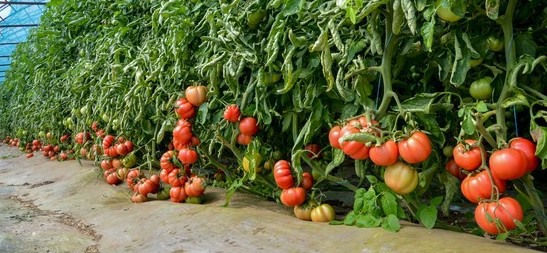This fall, questions were asked in the Dutch Parliament when people found out that Milieu Centraal (an environmental organisation), which receives government subsidy, discouraged the use of greenhouse tomatoes from the Netherlands, and advised consumers to buy Spanish or Moroccan produce instead.
Minister Carola Schouten answered last Friday. She doesn't deny the fact, but points out that it was due to 'data that was no longer accurate'. The calendar Milieu Centraal published with the advice has since been taken offline, Minister Schouten ensured. "The fruit and vegetable calendar has been offline since April 2020. It's very time consuming to keep the 'environmental score' of all the produce for every month up to date," can be read at the consumer advising organisation.

Categories
Milieu Centraal differentiates fruits and vegetables based on how much they affect the environment. Products got categorised in A through to E, A being most environmentally friendly and E being most environmentally unfriendly. This was also based on seasonality.
In winter, tomatoes from the Netherlands received categories B, C, D and E from Milieu Centraal. According to Schouten, most of the tomato types got category B, but some of them got categorised as E. That last fact raised some eyebrows this fall, especially since tomatoes from Spain and Morocco were categorised as A and B, meaning they would be less environmentally harmful.
No subsidy
Schouten points out that Milieu Centraal did not receive subsidy for the fruit and vegetable calendar and that it is 'not up to the government to determine what advice independent organisations like Milieu Centraal give.'
The MPs who asked the questions, among who Maurits von Martels (CDA) and Arne Weverling (VVD) wanted to know from Schouten whether the advice, in her opinion, wasn't diminishing to the appreciation for Dutch horticulture, 'front runner in the field of efficiency, innovation and biological pestcontrol' according to the Members of Parliament. They also wondered whether advising imported produce is in any way in line with Schouten's 'circular vision'.
No advice, because no accurate calculation available
Schouten said she has 'a lot of appreciation' for Dutch horticulture, 'indeed, front runner in many aspects', according to her as well. The agriculture minister could not be led to making a choice or giving advice. "At this moment, there is no accurate calculation available with which a careful statement can be made about how the current production of Dutch tomatoes is comparable to the production of tomatoes in other countries."
Greenhouse cultivation vs. outdoor cultivation and import vs. local
The challenged calendar is offline over at Milieu Centraal. The consumer advisory organisation does list points based on which the choice between products can be made. For instance, greenhouse cultivation is a bigger user of energy than outdoor cultivation according to Milieu Centraal, and because of that the cultivation emits more CO2 than outdoor cultivation. There are sustainability pros as well, among which much less use of water. "Greenhouse cultivation has a lower use of water than outdoor cultivation," according to Milieu Centraal.
The organisation also (among other things) points out that it is difficult to determine in what kind of greenhouse a product is grown. "Dutch greenhouse horticulture in 2050 wants a fully sustainable energy supply for greenhouses in the Netherlands. That's why the sector goes for energy saving, geothermal heat and combined heat and power (CHP). CHP more efficiently makes heat and electricity from gas, so less gas is needed. Thanks to CHP and geothermal heat in greenhouse horticulture, products from the CHP greenhouse have a lower impact on the environment. In the supermarket, you can't see in what kind of greenhouse the product was grown."
